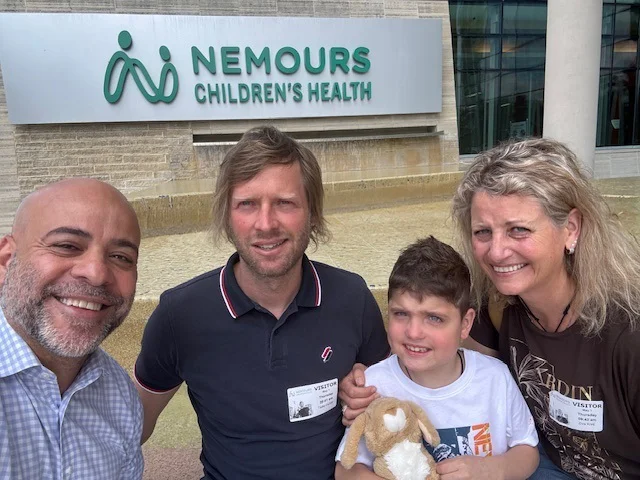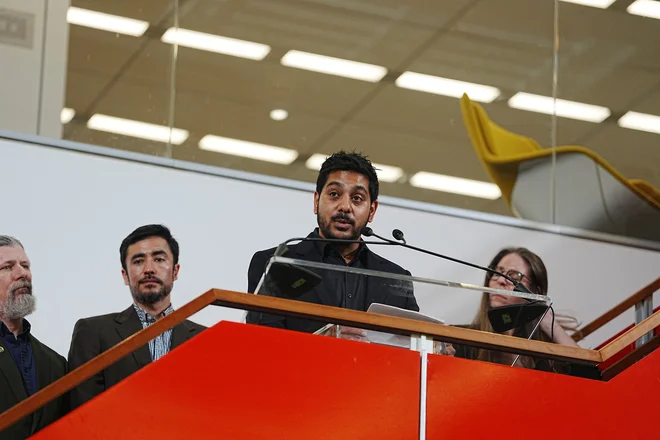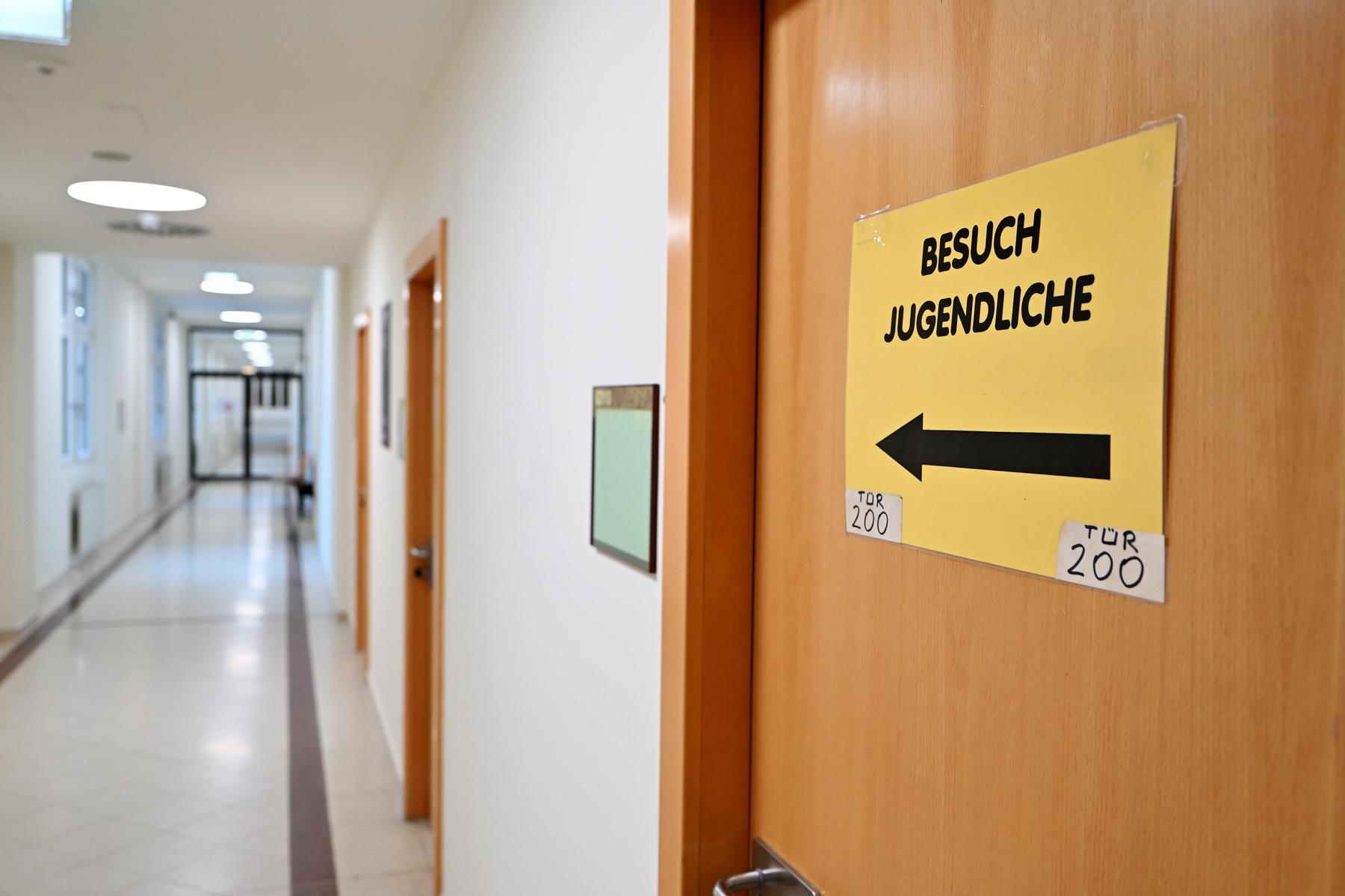Causes, symptoms and effective treatment
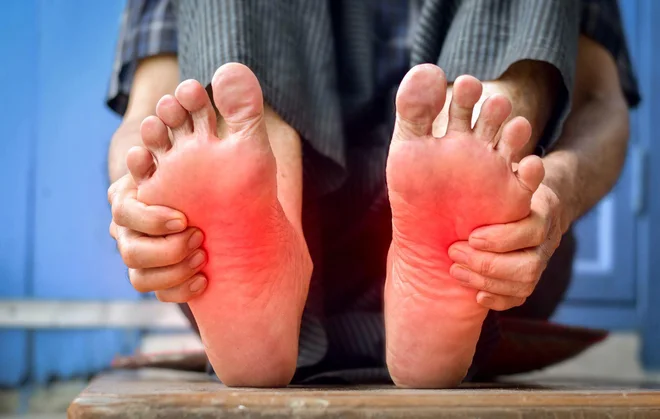
How often does it happen to you that in the first morning steps you are stabbed sharp a pain in the heel? Or that after a long sitting when walking, you are surprised by the unpleasant feeling – as if someone with a needle pissed you in your foot? It may even discount this pain after a few minutes, but it often returns, especially after a long walk, running or busy day. Such symptoms are not random, much less rare and it is quite possible that you have one of the most common foot problems called plantar fasciitis.
Although this is a problem that most commonly affects athletes, especially runners and individuals with specific professions, can also occur among the wider population. The cause of the occurrence is often associated with excessive mechanical load or chronic overload that causes micro -injection and inflammation.
Symptoms usually develop gradually, and although plantar fasciitis is not dangerous, it can significantly affect the quality of your everyday life. The disease can go into a chronic form: gradually you can begin to limit you in the heel when walking, working, and during many leisure activities. Fortunately you can modern physiotherapy treatmentAs performed at the top -notch Medicofit Clinic in Ljubljana, successfully eliminate problems and live without pain.
Do you have similar symptoms? Subscribe for a diagnostic examination to a specialist in physiotherapy for plantar fasciitis at the Medicofit Clinic.
What is plantar fasciitis and why does it occur?
Photo: Medicofit
Plantar fasciitis is a degenerative inflammation of the plantar fascia – connective tissue that runs from the heel to the toes and supports the foot bow. This fascia plays a key role in the maintenance of the foot arch and absorption of strikes while walking. When overburdened – due to recurrent mechanical forces, irregular posture or inadequate footwear – microdegeneration begins to occur in it, leading to inflammation and pain.
It is important to remember that it is not just acute inflammation, but a degenerative change, so simple rest or painkillers are usually not sufficient. A complete understanding of the cause and carefully directed therapy is crucial.
Plantar fasciitis is often the result of several factors present at the same time:
- a flat foot or a tall foot arch that changes the biomechanics of walking,
- Reduced ankle mobility or Achilles tension that tolerates a load on fascia
- long -term state or walking on hard surfaces,
- Poor footwear – inadequate sole, lack of support, too soft or torn shoes,
- Excessive body weight that further strains the foot arch,
- Sudden or intense physical activity, no gradual adjustment.
The problem is therefore not only related to age or specific sports activity. It can also occur in younger ones, especially when changing your lifestyle or incorrect load of the foot.
Symptoms and course of illness
The most common and most characteristic symptom that can alert you to plantar fasciitis is sharp, burning pain on the inside of the heelwhich appears in the morning when we take the first few steps, or after sitting for a long time. Although the pain is often calmed down after a few steps, it is characterized by the fact that after excessive load, it reappears. If the pain persists for a long time, even at rest, we are talking about the progression of the disease and the state, which can already have a specific impact on your daily activities.
In the early stages of the disease, the pain occurs exclusively at exertion, but later it becomes constant and affects the quality of life. In very rare cases, plantar fascia rupture can occur, which is manifested by sudden and very intense pain in the heel.
The pain often has a stabbing or burning character, sometimes spreading along the finger sole. Some patients describe the feeling that they are « walking on nails ». If the condition lasts for a long time, the pain can become constant, causing chronic discomfort and reduced mobility.
How can you help yourself with trouble

Photo: Medicofit
Home treatment is often the first step and involves simple measures.
Rest: Limit or even interrupt activities that cause or increase pain such as running, dancing, jumping on hard surfaces, etc.
Change of exercise: Replace high -intensity workouts with more subdued activities such as swimming and cycling.
Loka cooling: Freeze the bottle with water and then roll it under your foot several times a day.
Appropriate footwear: Do not wear worn or inappropriately designed shoes. Choose a thick sole and additional upholstery that alleviates the loads when contacting the heel with the ground.
Plantar fasciitis exercises: Check the recommendations of experts from the Medicofit Clinic
You can also do a lot with appropriate exercises for plantar fasciitis. Check the tips of kinesiologists:
1. Stretching the muscles of the rear lodge
Lie on your back on the pillow, stretch one leg into the air and, with the help of elastic, mount over the foot, which you hold with both hands, enlarge the stretch.
Hold the stretch for 30 seconds, make three reps with each leg.
2. The stretching of the plantar fascia
Sit on the floor with your legs outstretched, with the elastic embracing the front of your feet and slowly pulling your foot against yourself without bending your knee.
Hold the stretch for 30 seconds, make three reps.
3. The stretching muscle stretch
Put yourself against a wall with one foot forward (the knee of these legs is crooked) and the other behind (where the knee is extended). The back foot is extended and pushes the heel to the ground. We push the body towards the wall to feel the stretch in the sword area.
Hold 30 seconds, make three reps.
4. Raising to the fingers
Stand upright with your feet wide and slowly rise to your toes and hold your position for five seconds.
Do the exercise ten times and repeat three times.
5. Roll up towels
Sit in a chair and put a towel under your feet, then try to grab a towel with your fingers and lush and pull it.
Do the exercise ten times with each leg and repeat three times.
If you notice symptoms and suspect that you have plantar fasciitis, do not delay too long and consult a physiotherapist as soon as possible, as the disease requires a correct diagnosis and treatment.
The overall health of plantar fasciitis in the Medicofit Clinic takes place in four phases: diagnostic examination, acute physiotherapy, postcute kinesiology and preventive kinesiotherapy.
Successful treatment at Medicofit Clinic
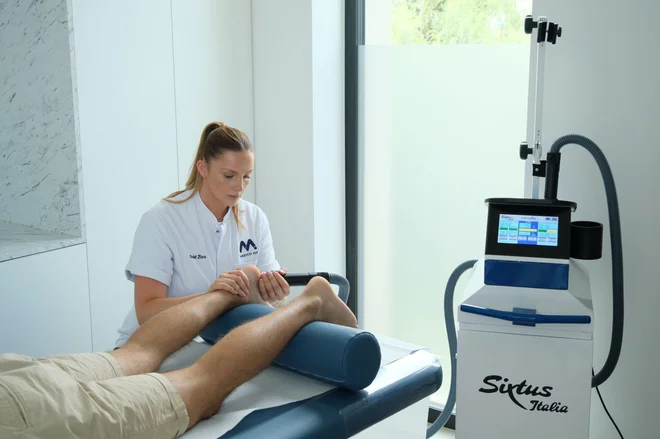
Photo: Medicofit
In order not to turn into chronic problems, timely diagnosis and individually tailored physiotherapy are crucial for rapid and effective recovery.
At the Medicofit Clinic, each treatment always begins with an in -depth functional physiotherapy examination, where a physiotherapy expert first evaluates pain, mobility, muscle strength and endurance, walking analysis and also performed functional tests, such as the Windlass test for determining plantar fasciitis.
The whole process of diagnostic examination is designed to allow the physiotherapist a comprehensive insight into your medical condition. Based on the data obtained, it is drawn up by an individualized treatment plan that is tailored to your needs and goals for recovery.
Medicofit uses proven and advanced physiotherapy methods in treatment:
- TECAR therapy through deep heating relieves inflammation and releases tension,
- Striking Waves (ESWT) therapy stimulates regeneration and decomposition of degenerated tissue,
- Pulse magnetic therapy promotes microcirculation and reduces pain,
- Manual Therapy: The therapist mechanically releases tense structures and relieves fascia,
- Target kinesiotherapy: The foot systematically stretches and strengthens – especially the muscles of the foot arch and the flexible muscles.
After completing the physiotherapy phase, it is followed by a postcard kinesiology, in which you will improve your fitness. Special kinesiological exercise It is crucial at treatment of plantar fasciitis And it focuses primarily on the following aspects: eliminating muscle imbalances, improving the proprioceptive abilities of the ankle and lower limb. If you are involved in specific sports, a pliometric exercise is also performed, which is adapted to the loads of your sport.
After the end of treatment, they also make special measurements that will show what your movement efficiency and willingness to return to your daily activities.
Particular emphasis is also placed on preventative kinesiotherapy, which begins when the pain goes away.
A very important phase throughout the treatment is also preventative kinesiotherapy, which plays a key role in preventing the recurrence of old injuries and the occurrence of new ones.
Most patients involved in the integrated Medicofit program report a significant reduction in symptoms within the first 4-6 weeks. In chronic forms, rehabilitation lasts a little longer, but with professional support and consistent implementation of therapeutic measures, improvement over up to 12 weeks is expected.
An example of successful treatment of plantar fasciitis
The Medicofit Clinic is due to pain on the underside of both feet visited 49-year-old Jernej. The gentleman is very physically active, as he regularly goes for longer hikes, and is running four times a week. His pain first began to appear about a month agofirst in the left foot and then in the right.
Clinical examination has revealed Sensitivity of the plantar fascia area mutually and the irritation of the Achilles tendon attachment on the right foot. The following were carried out Tests of the power of the flexible musculaturewhich, according to considerable physical stress, revealed unsatisfactory results. The motility of both ankles was appropriate and the rating of the foot structure indicated reduced medial foot archwhich was more pronounced on the right side.
The Lord was proposed A comprehensive 10-week physiotherapy treatment with the main goal of strengthening key muscle groups. In the introductory phase, painks were performed to reduce pain. These included the use of physical agents such as Summus laser, EMS dolorclast striking waves and TECAR therapy, and were additionally used special manual techniques.
A marked reduction in discomfort as well as pain occurred after four therapies. Due to the favorable response to the introductory therapy, it has begun quite early with the progressive burden of musculature. Specialist Physiotherapist provided the preparation and proper implementation of exercises for Improving static as well as dynamic ankle stability as well as exercises for strengthening the intrinsic muscles of the foot. Most further hearings were under the supervision of a kinesiologist who prepared for Mr. Jernej Special Kinesiological Program to Strengthen Key Muscle Groups.
Not only At the end of treatment, foot pain was no longer presentbut the gentleman has also shown considerable progress in muscle strength, which will help him in the long run in maintaining an asymptomatic state.
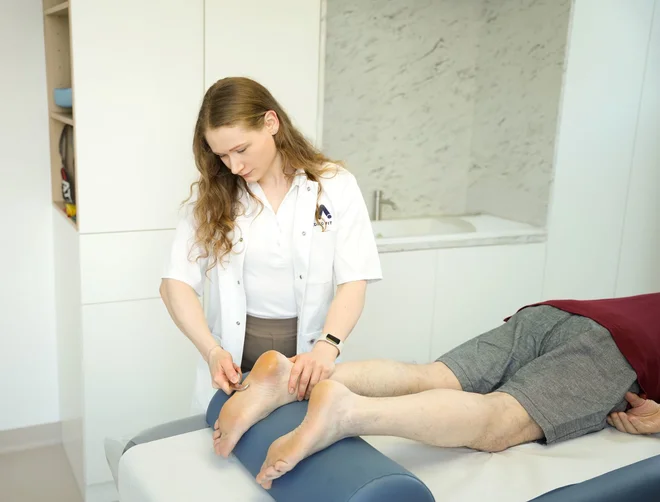
Photo: Medicofit
Take the first step without pain
If the fifth pain is becoming your daily companion, do not wait for your life. Timely diagnostics and holistic treatment are the key to successful treatment.
At the Medicofit Clinic, an expert approach and innovative treatment methods will help you to a permanent solution.
Medicofit is a subscriber


